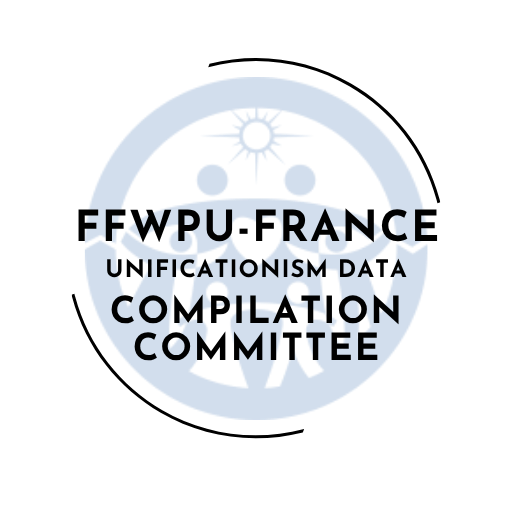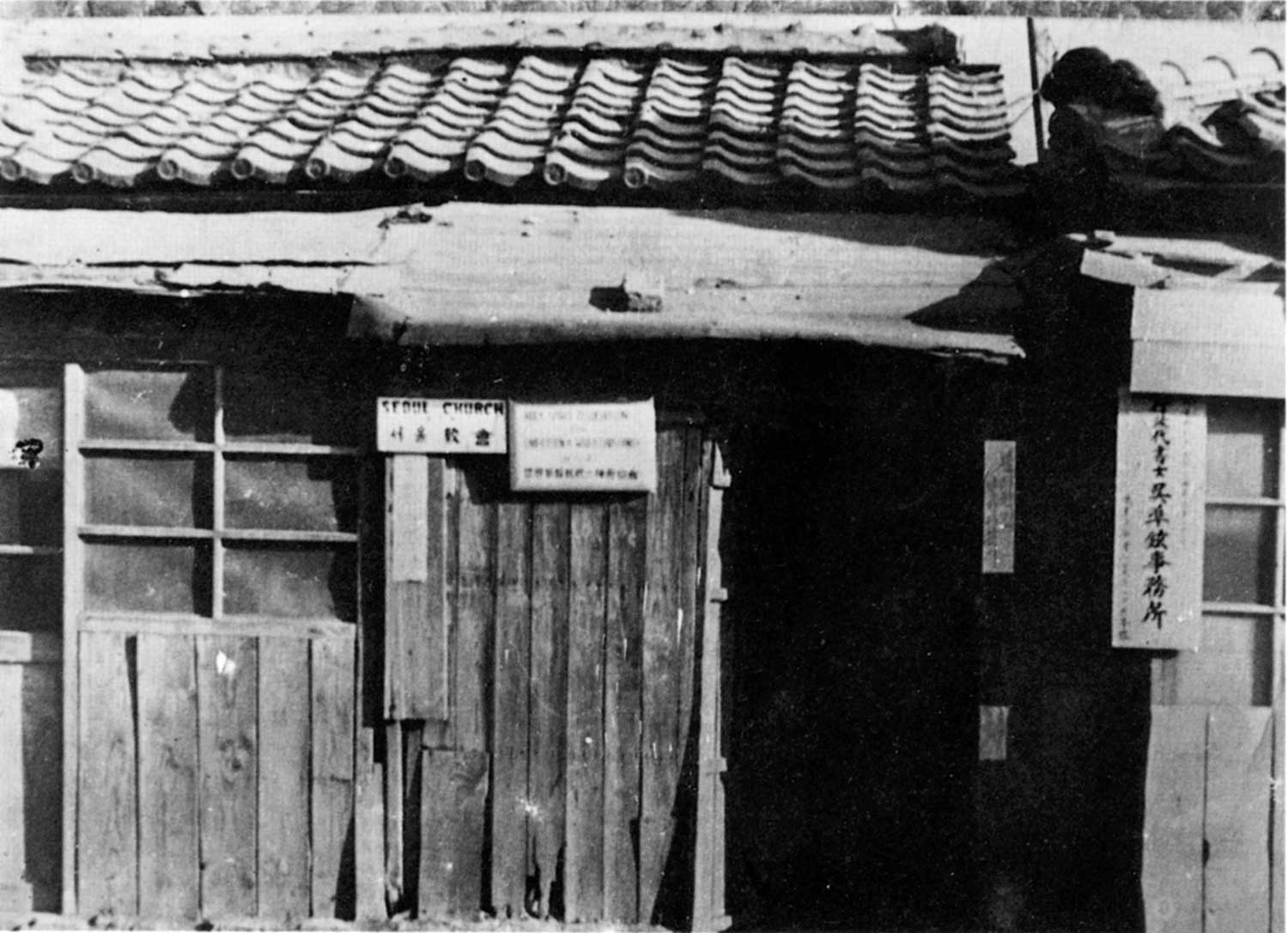True Father returned to Seoul on September 17, 1953. In Seoul, he prepared to establish his church more officially. Father also visited the churches in Daegu and Busan to guide and encourage the members working in those pioneer missions. He offered many sincere conditions to establish the foundation of faith for a new beginning. The Holy Spirit Association for the Unification of World Christianity (HSA-UWC) was founded on May 1, 1954 at the small “3 Gate House” in Bukhak-dong, Seongdong-gu, in northern Seoul. In this installment, Father explains some of the deep spiritual background.
Part 53
Although the Unification faith began in 1954, we know it originally began immediately after Korea’s liberation[1] and, going back beyond that, it originated soon after the Fall. Unificationism has its origin at the beginning of history. Its beginning coincides with God’s launch of the providence of restoration.
Whether I stayed under the eaves of some house or in a shanty, my thought was, “I have to attend God here and offer greater devotion.” My belief was, “According to the Principle of Restoration, the leader who can offer sincere devotion for the world should be able to do it even in the tiniest house.” This was my way of thinking. Then I would say, “Now that I have offered sincere devotion in this tiny house, I should be able to offer it in a bigger house befitting a world leader.” The Unification Church began in this place. The Unification Church has grown to this size starting from this tiny Bukhak-dong house with its three gates.
This is the main philosophy of the Unification Church. Although there have been many rumors about us, so much so that all the world has heard about us, no has one criticized the Unification Church for its small size. What was most important was what we did in that place.
The Unification Church is a church but I don’t like the word “church.” I had no choice but to put up a sign with “church” on it. When I established the church, I did not think, “Heavenly Father, I have made the Unification Church. I am so proud.” I put up the sign, but I have always wondered when I will be able to take it down again. The sign was for the sake of the country. In order to recover the country I am also willing to remove the Unification Church sign. In order to enable the country to live, I can take the Unification Church sign down. Who would be against that? Who would be against exchanging it for something bigger and better?
At that time, I didn’t have any money at all. If I lay down in the room, my feet touched the walls. That house was rented. At the time, I didn’t even have barley rice to eat, which even in those days a beggar wouldn’t receive thankfully. If you gave barley rice to a beggar, he would throw it in the garbage. Seen in this light, I endured all types of things, saying to myself, “The day will come when we must widen this path. According to the way of heavenly fortune, you will advance to higher dimensions, progressing from you as an individual to the family, society, nation and world. That day will surely come.”
At that time, I was in a desolate state. I wore an old jacket and army work jeans with most of the color faded, and rubber shoes. Who could say who the leader was, or who was a follower in the Unification Church? Going in and out of the house, we all looked the same.
It wouldn’t have been so bad if more people visited the church but this same situation went on month after month for a whole year with just the church sign hanging on the door of the house. Sometimes men with a topknot [of hair][2] and a gat[3] visited the church. At that time who could believe that the Unification Church would develop into a global movement?
Be that as it may, it doesn’t mean that I was a poor, unworthy leader. Day or night, I would go up into the mountains to pray. At that time, I felt that if I were to put my hands round Satan’s neck, his head would come off in my hands. If I were to hold on to heaven, I would bring it down to where I was. If I were to hit the earth I could drive a hole through it. I felt so confident and courageous. I said to the world and to Heaven, “Wait and see!”

The providential background to the founding of HSA-UWC
If Christianity had become one with me in 1945, I wouldn’t have had to suffer so much in walking this path. However, when Christianity opposed me, I had to endure extreme suffering and overcome it all by myself. I had to set up the Unification Church in place of Christianity and establish the foundation to restore the world through indemnity. The Unification Church was established in the seventh year counting from 1948; that period had the significance of indemnifying the Old Testament Age. So, on the foundation of these seven years, humankind could enter the New Testament Age for the first time. That’s why I established the Unification Church on this new foundation, before 1960. The period until 1960 indemnified the failure of Christianity. You have to know that I had to go through courses representative of all the suffering courses in God’s will in the Old and the New Testaments because of this. I had to lay the foundation, indemnifying not only everything the Israelites had failed to do and everything the Christians had failed to do but also everything that Jesus had been unable to do.
Who stood up for God’s will? It was not the spiritual Christian organizations. It was I who stood in front of God. It was from that time that I began to receive opposition, and so I stood alone.
It was from this point that I laid the foundation for the Unification Church. Following the laying of the foundation for the Unification Church, the form of the new [Korean] government became settled. That is from the viewpoint of the providence.
I established our church in 1954 and expanded upon this new foundation within the chaos of the time. The Unification Church developed in confrontation with the government and the established Christian churches.
The drive behind the establishment of the church
I put up the sign for the Holy Spirit Association for the Unification of World Christianity[i]. I am saying that it is the association by which the Divine Spirit can unite Christianity. Some may think that it is simply an association of Unification Church members, but in fact it is an association led by the Divine Spirit of God to unite Christianity.
I didn’t start the Unification Church based on human thinking. Heaven provided the motivation for starting it. If I had established the Unification Church only according to human will, I wouldn’t be able to contribute to the flow of history or to building the coming new world. Therefore, I founded a new religion grounded in God’s will.
I did not act on my whim or do as I pleased. The Unification movement has deeply spiritual origins. It was formed based on the God’s instructions, and it appeared in this special age. I am constantly receiving God’s guidance. Many people think I do things my own way, but that’s not true. From its beginnings, the Unification Church has taken the path it has not for the sake of particular individuals but only for the sake of God’s will. Because my original motivation was caught up with God, the church took the path it has for God’s sake. If the Unification Church began on God’s account, it will not deviate. From one starting point, it must follow one path. Its final destination, absolutely, without doubt, is God; because the starting point was God, we cannot take it in another direction based on our own ideas.
We can therefore say that Unificationism has the longest history of any religion. What does having the longest history mean? It means we have uncovered the history of God’s love, the world that no one has known. The world of love transcends time and space.
On January 17, 1955, the church moved from its original (founding) location to 241-44, Heungin-dong, Seongdong-gu, Seoul, and on April 27, to a two-story building with a garden at 37, Jangchung-dong 1- ga, Jung-gu, Seoul. On October 7, 1955, after True Father was released from Seodaemun Prison, it moved again, this time to 71-3, Cheongpadong 1-ga, Yongsan-gu, Seoul. This is the address that the church used on May 31, 1963, when it registered with the government as Civil Society Organization No. 261. This is the building that is preserved as the Old Headquarters Church in Seoul and where so many providential events took place (see later installments).
- [1] From Japan, in 1945, concomitant with the end of World War II
- [2] Somewhat traditional, even old-fashioned—even in those days. In an effort to modernize Korea, King Kojong banned the topknot in the 1890s.
- [3] A traditional black hat with a wide brim, mostly worn by the “Yangban” or nobility.
[i] In the original name of our church, “Holy Spirit” has the meaning of “God’s divine spirit” rather than “the Holy Spirit” in the usual sense.


Leave a Reply